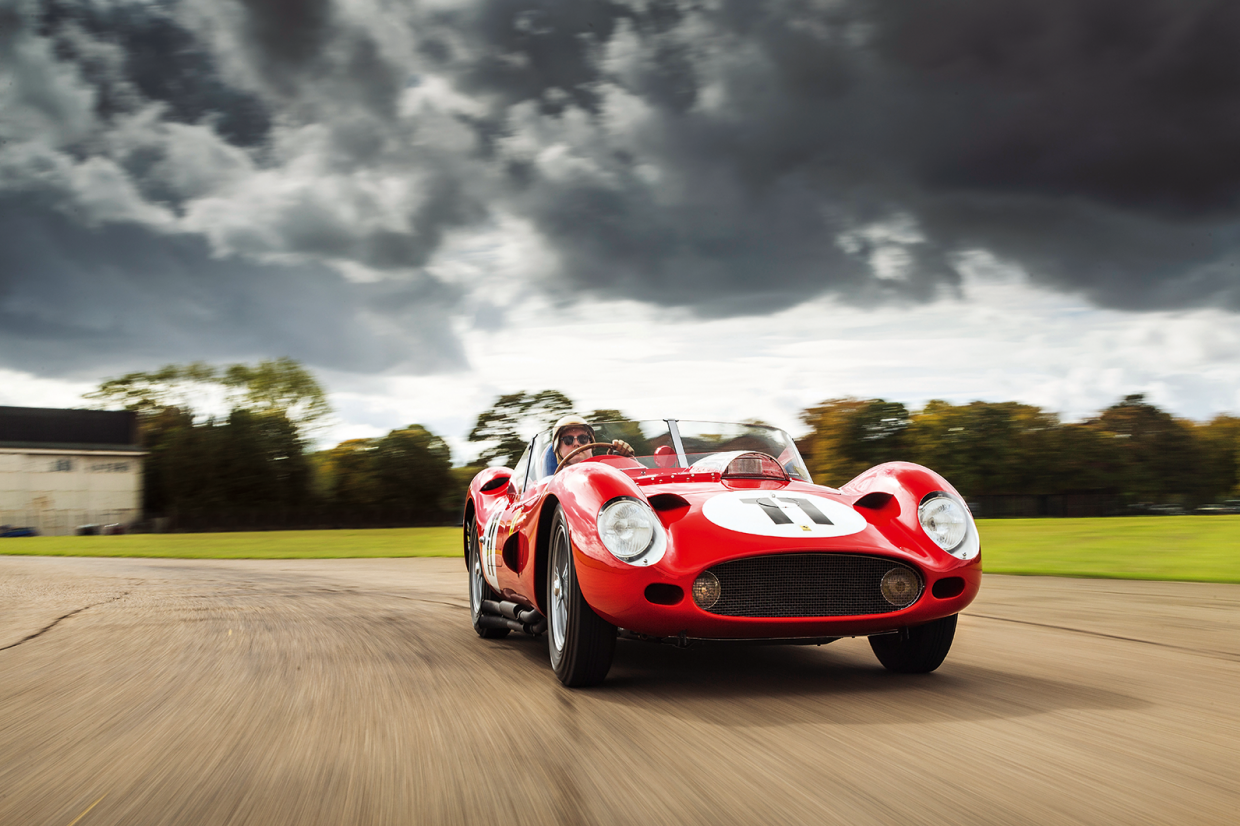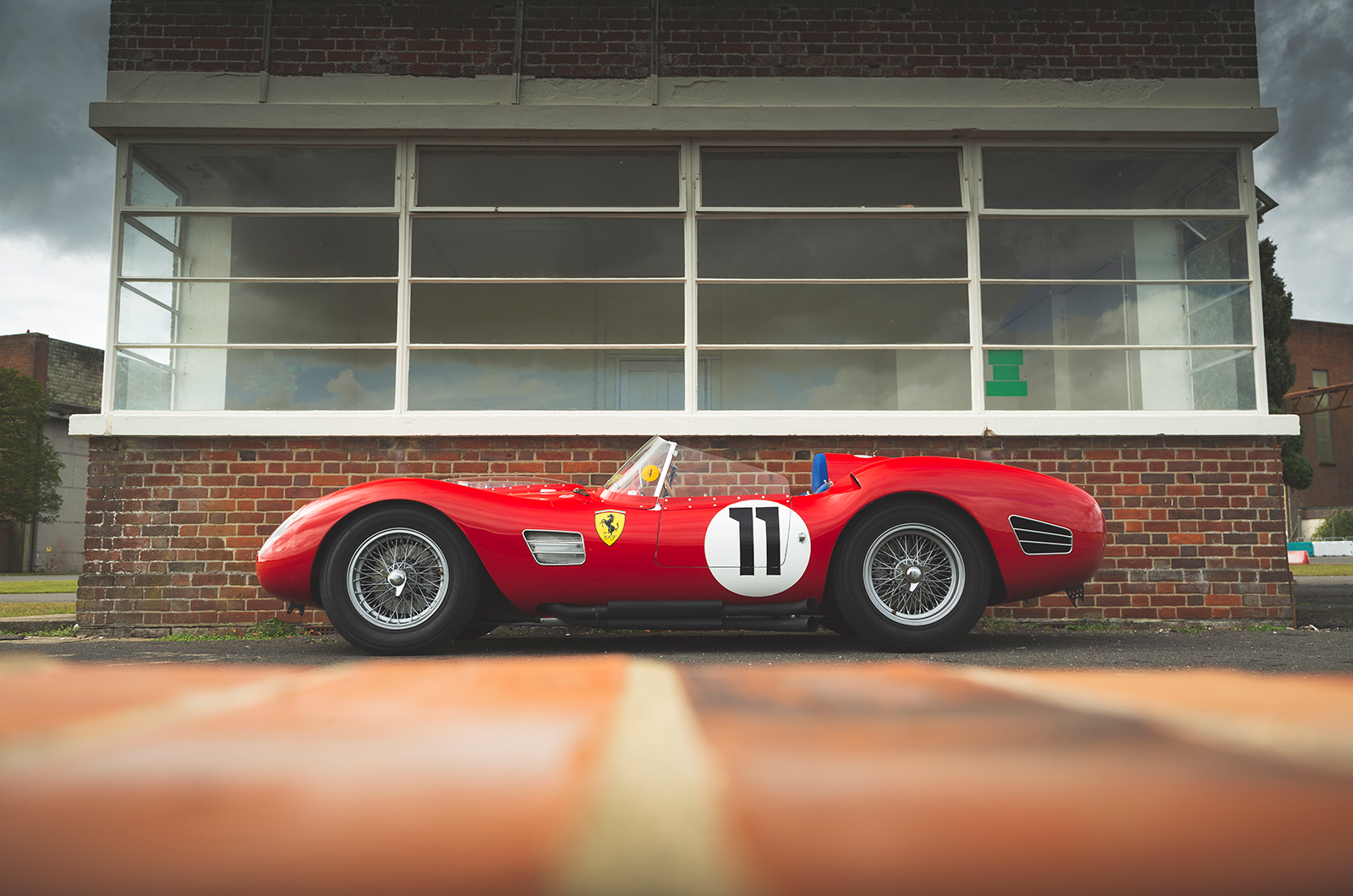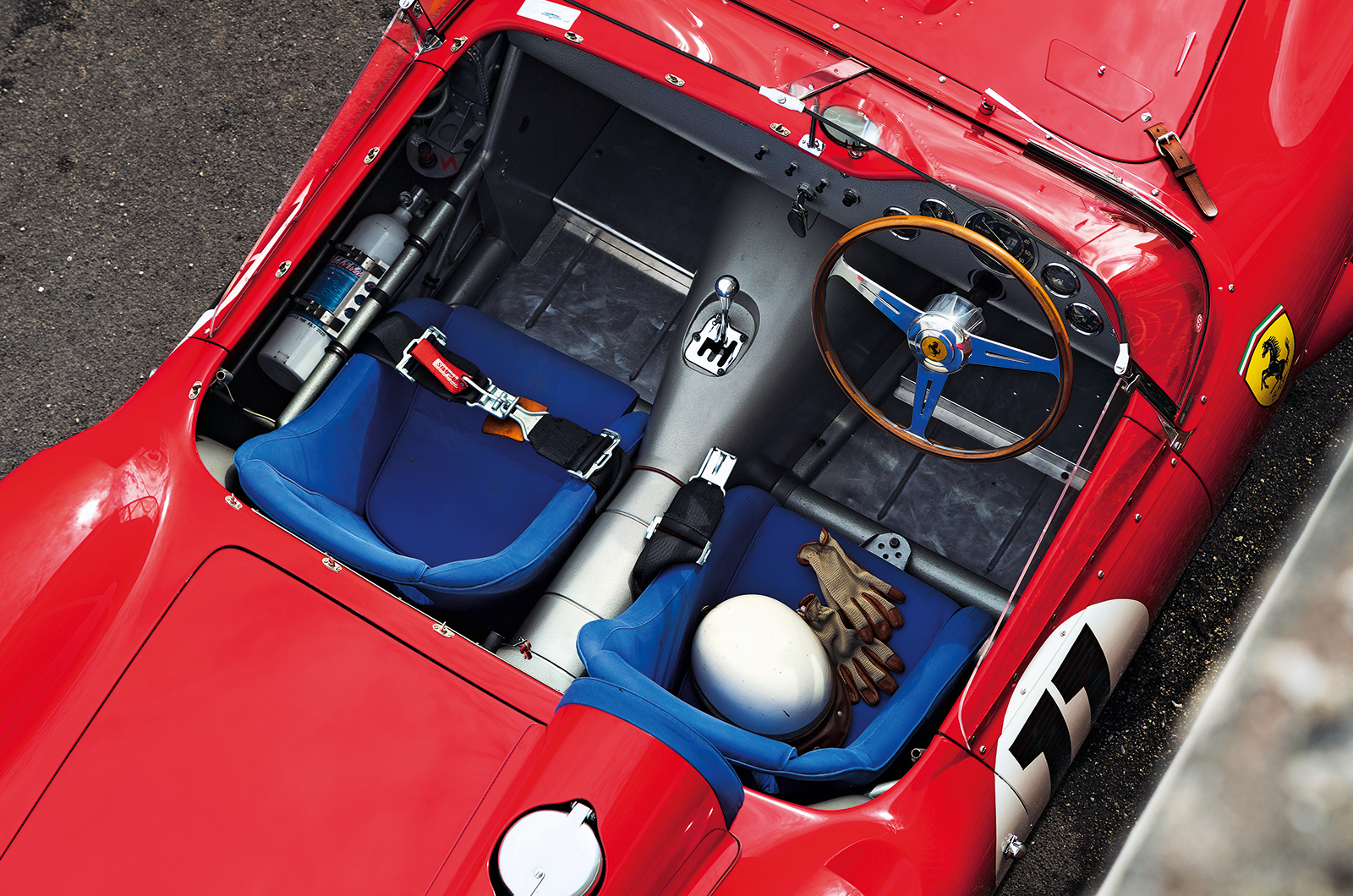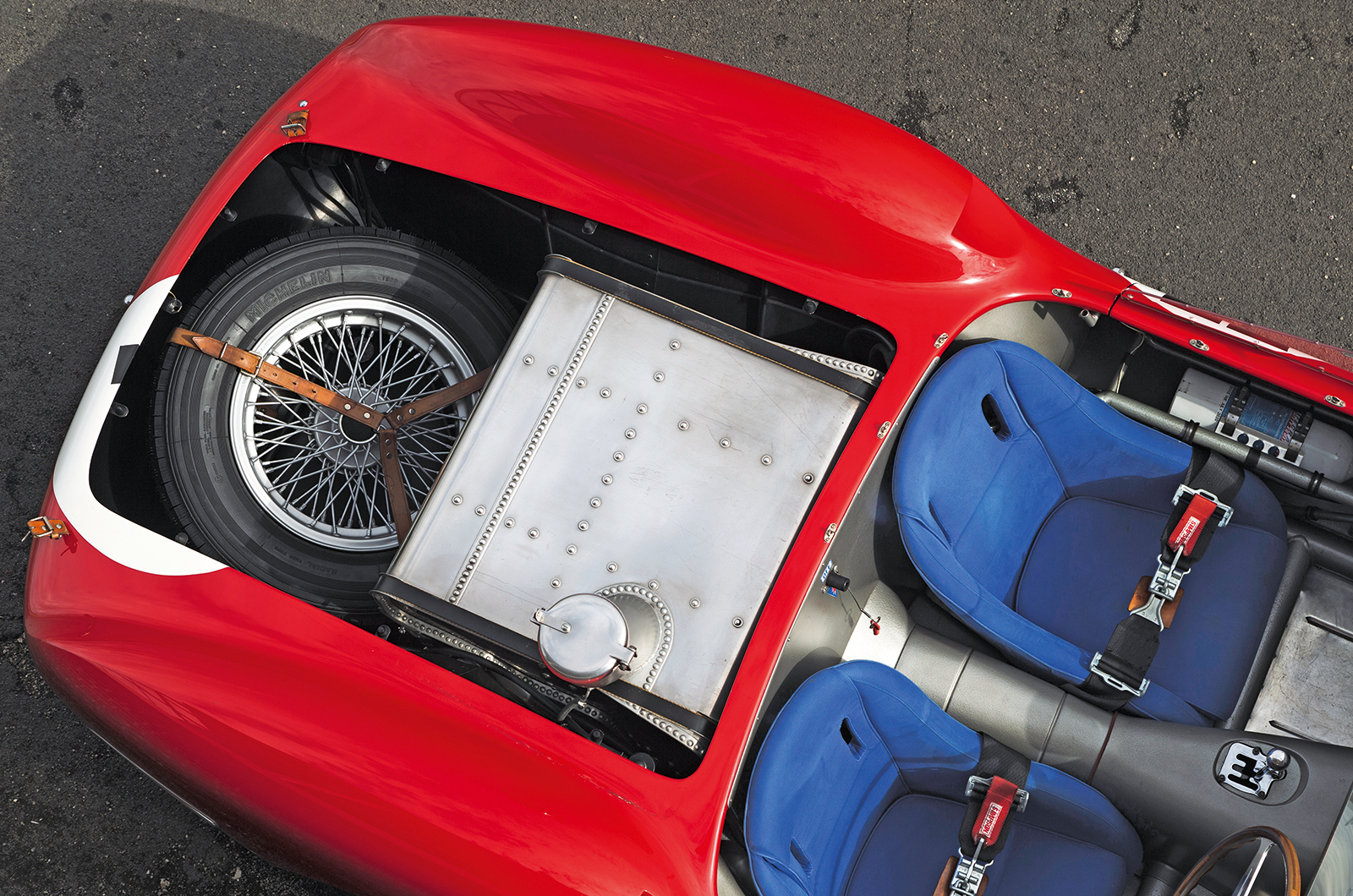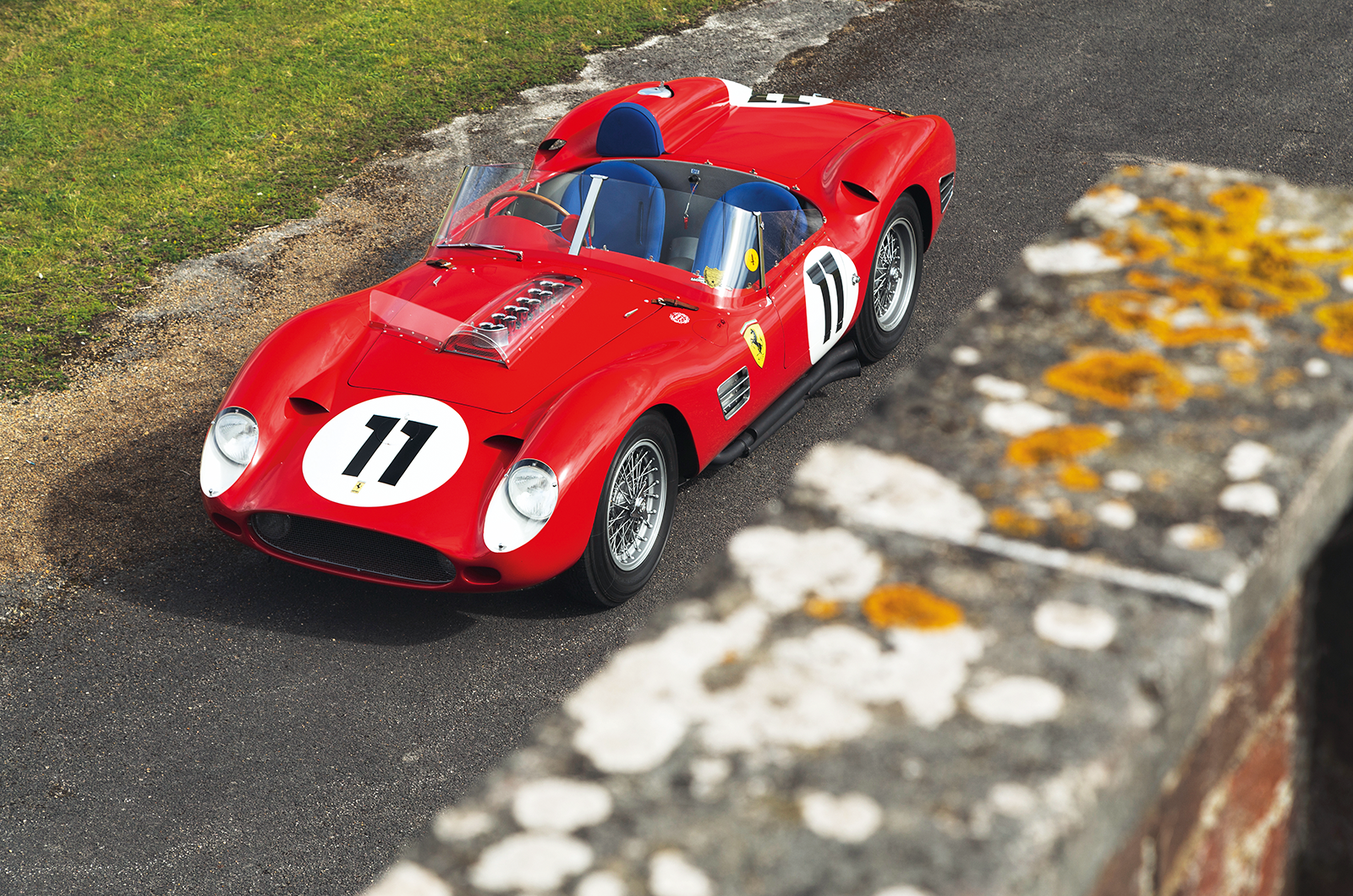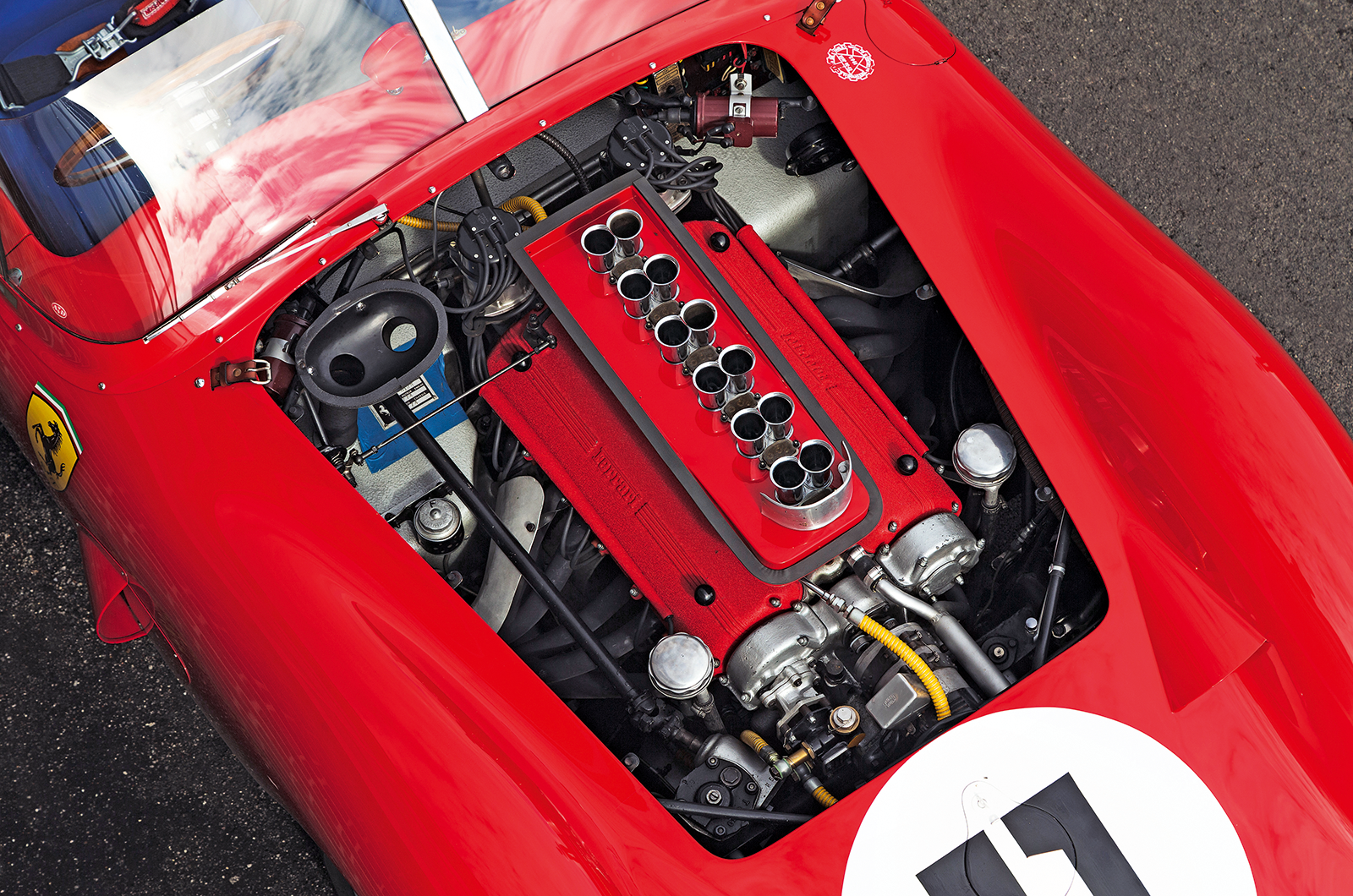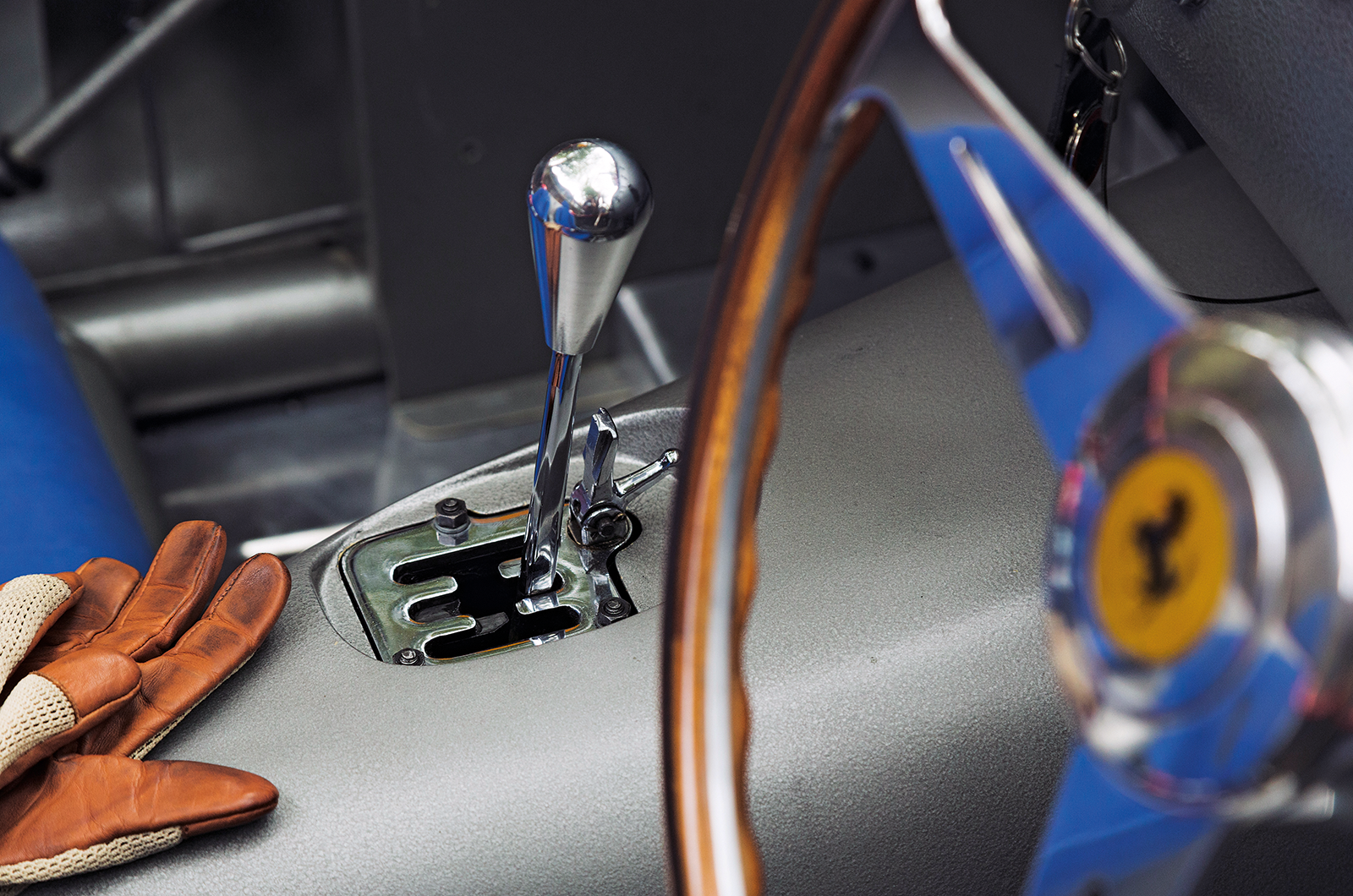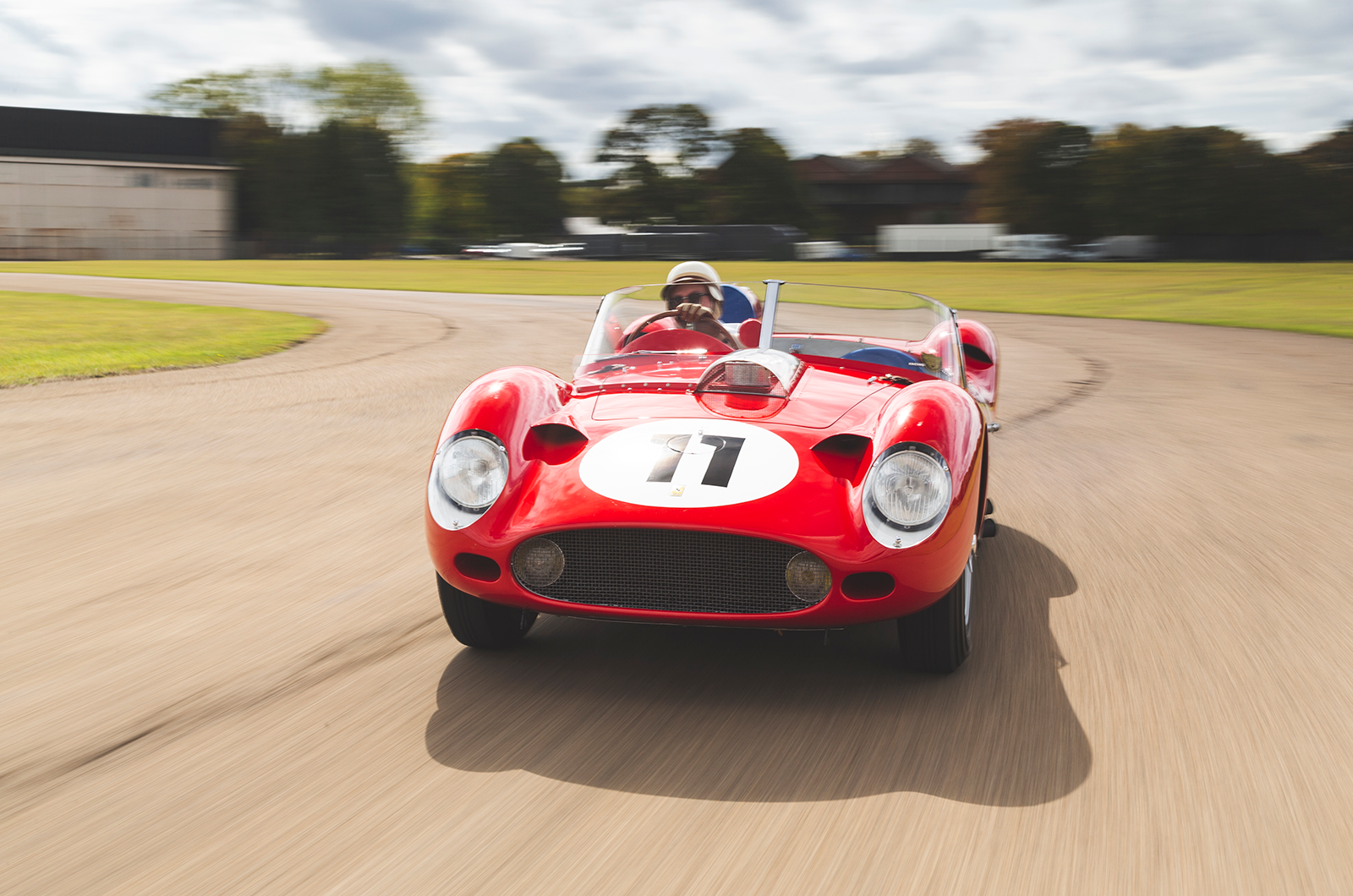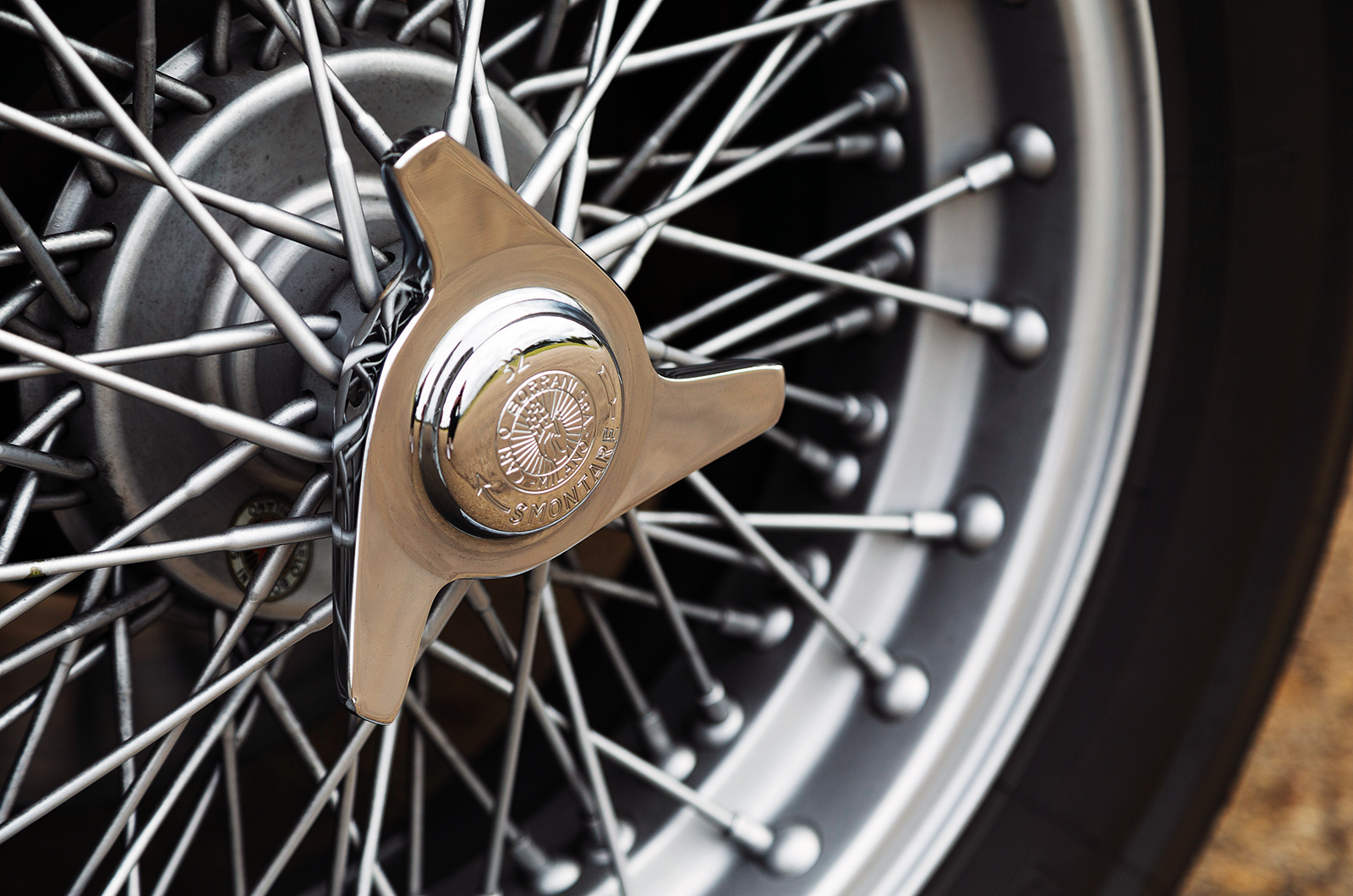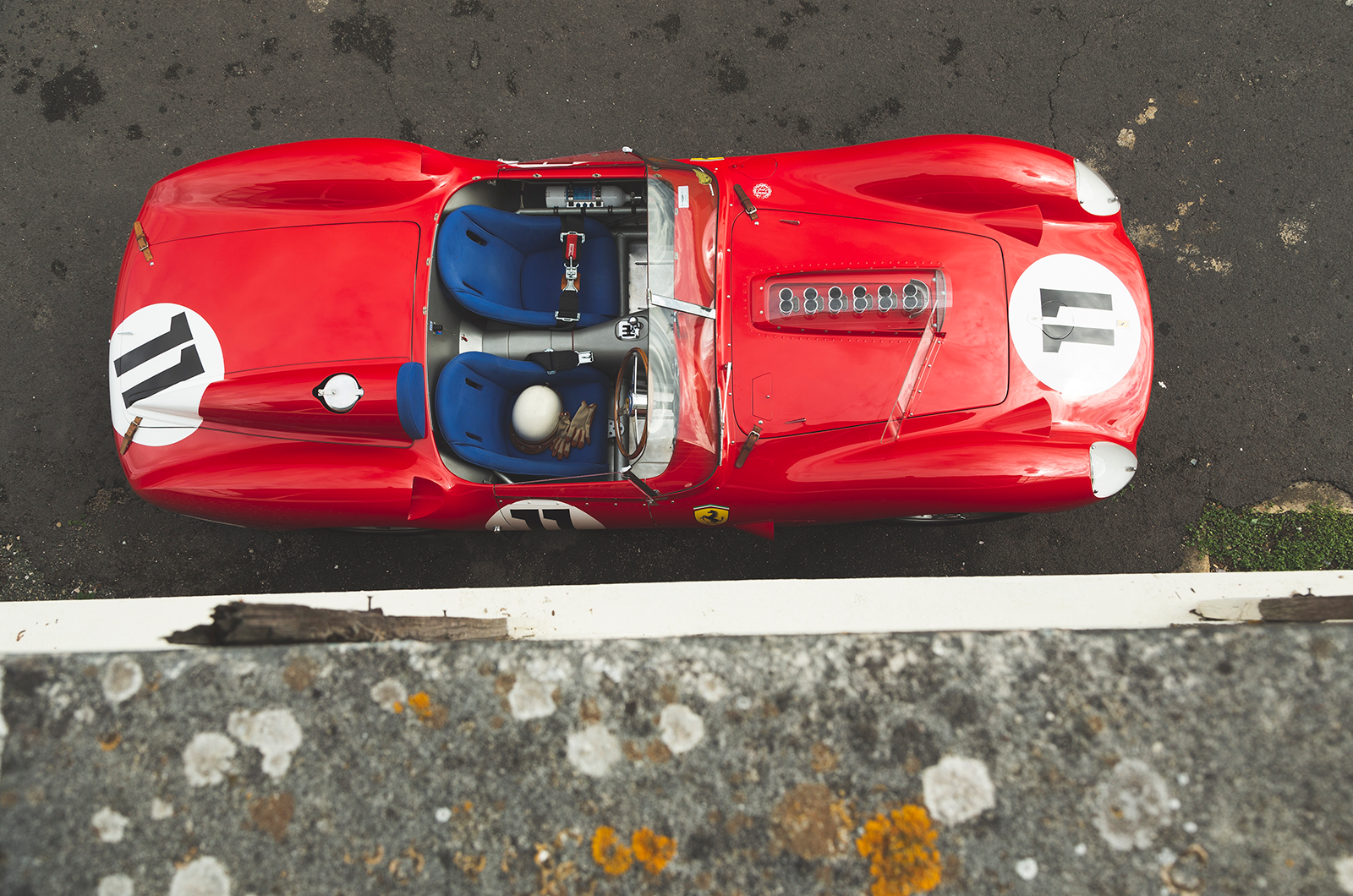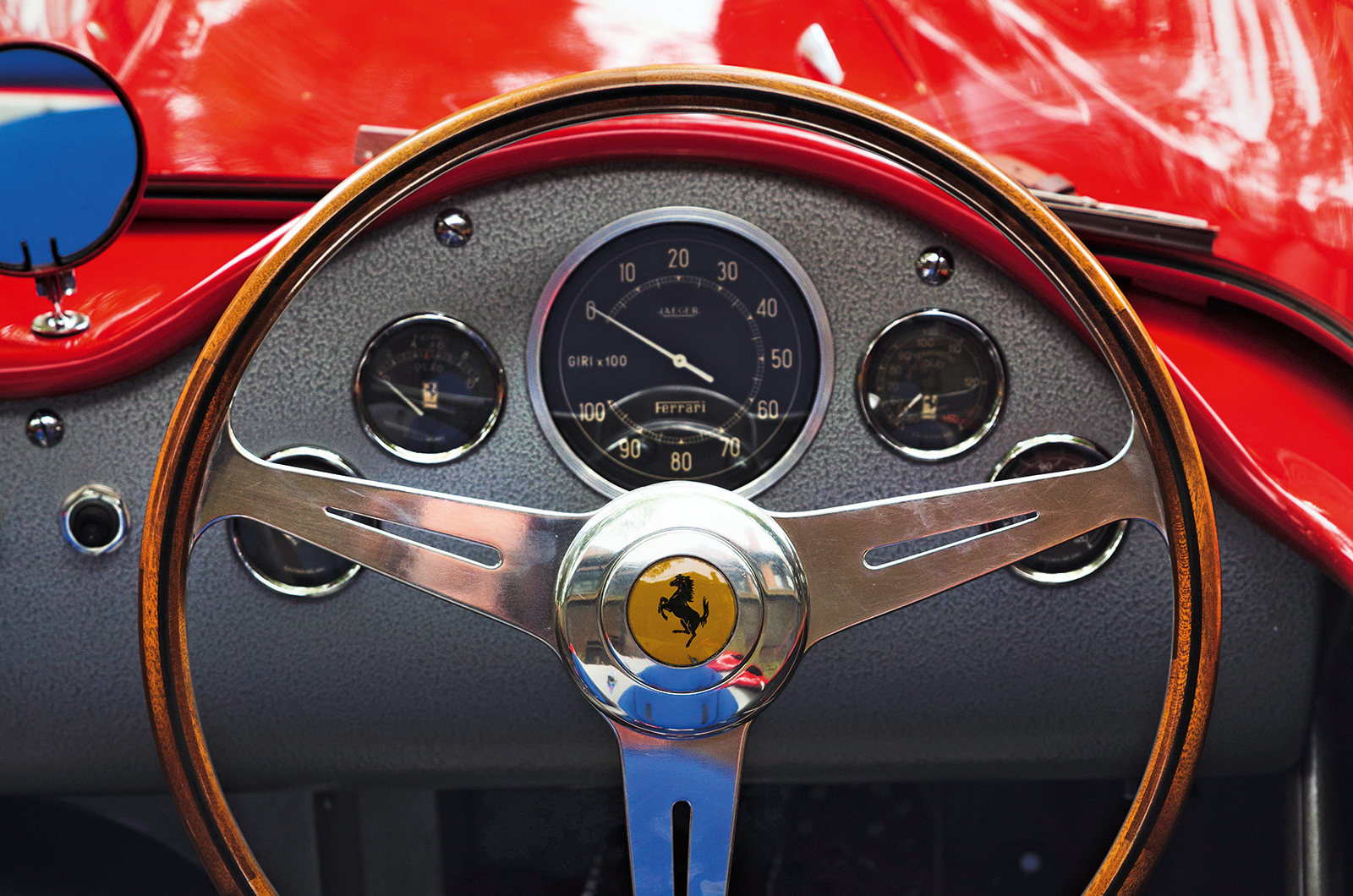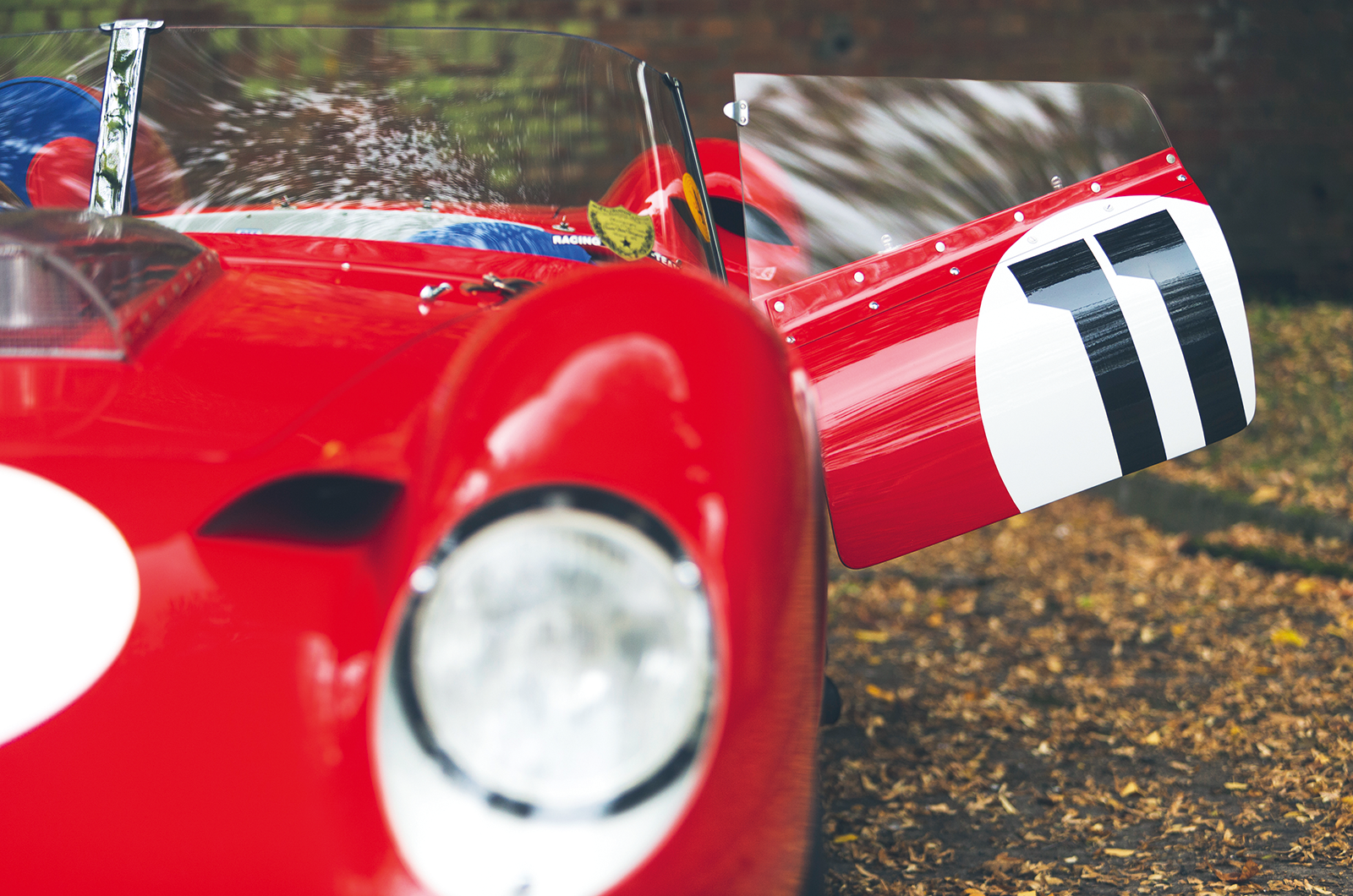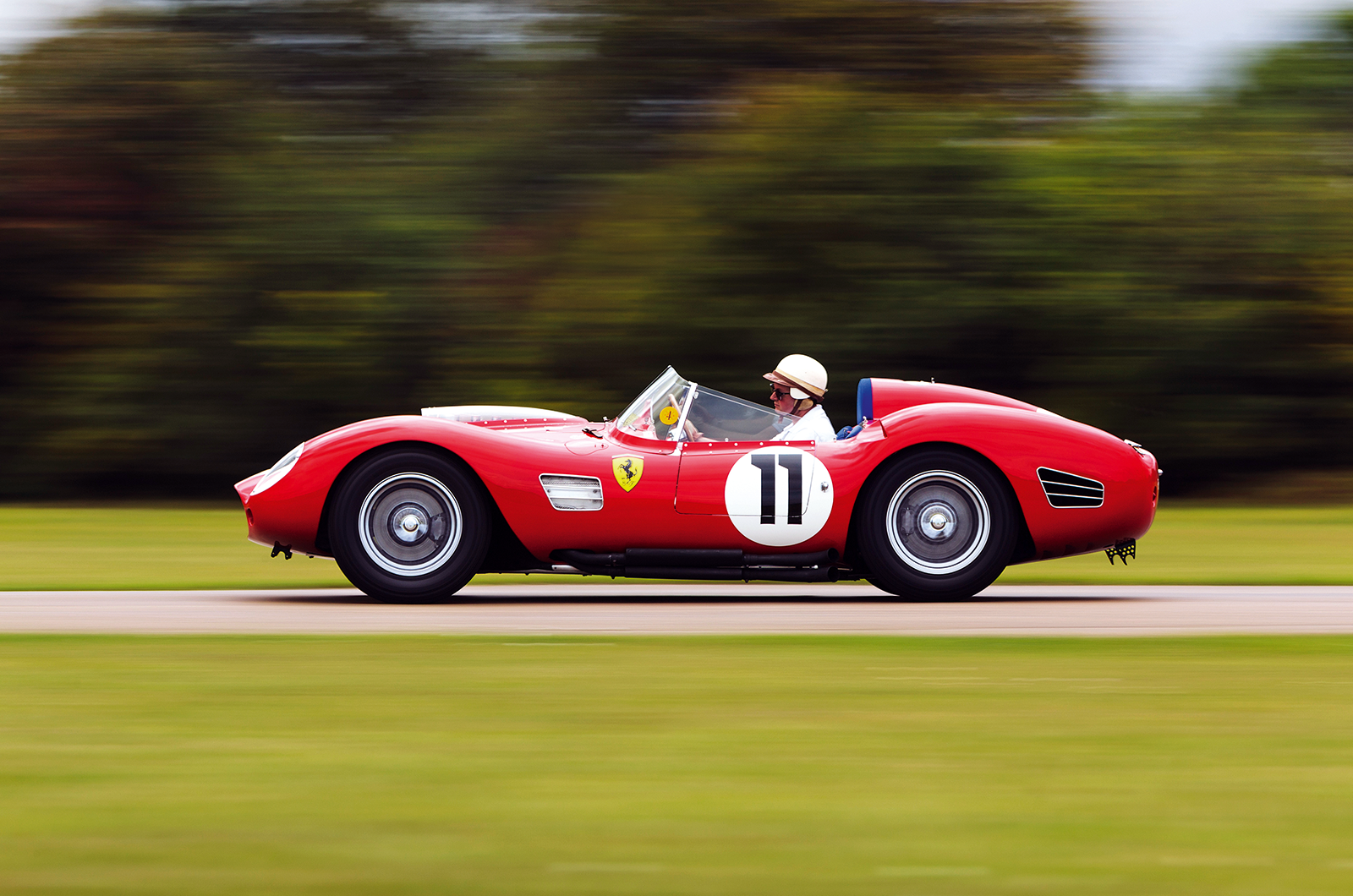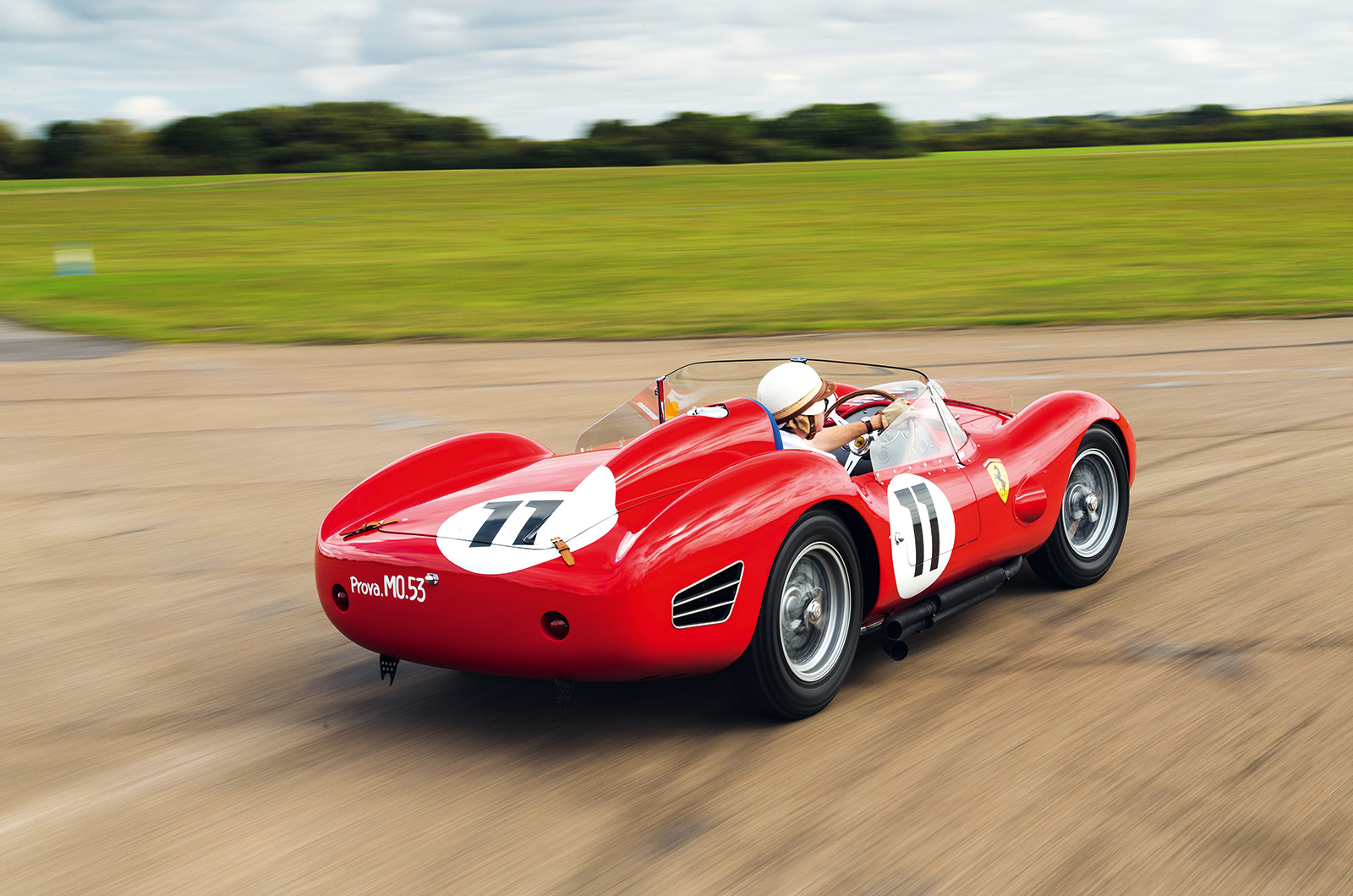Whenever asked about the TR, Crabbe proudly recalls how his wife, Fiona, used to use it to go to the shops. A Le Mans winner in the car park of Waitrose.
By 1977 it was owned by Paul Pappalardo, who reunited 0774 with its original engine and sent the car back to Maranello for a full restoration to 1960 specification.
He regularly used the TR at historic racing and concours events until he sold it to the current custodian in 2004.
Since then, it has been seen at events all over the world, including most recently the 2019 Goodwood Revival, where it took part in the 1959 TT Celebration that included an evocative smoke display referencing the Aston Martin pit fire.
Today, though, on a warm autumn day, we’re using the small test track at Bicester Heritage so the only interference will be the odd whir of the airfield’s glider pulley between runs.
To gain access, you pull a skeletal door before dropping down into the blue cloth seat.The car is enveloping, the gauges big and clear, all as though you are in a tiny submersible looking out into a different world.
The driving position is comfortable, with pedals, steering wheel and gearlever exactly where you would want them.
Pressing the starter button, the motor turns over for a few seconds longer than perhaps comfortable before the 12 cylinders detonate into life.
And what a sound! The angels and archangels of motorsport singing praise to their god.
With the TR already warmed up, first gear is engaged and it moves off on to the short and technical track, with only one brief straight to really open up the engine.
The gearbox is a surprise: rather than being Lotus-like, light and nimble, it is heavier. Like a DB ’box, although the weight doesn’t stop its well-oiled accuracy.
At Goodwood in September, the owner said that the TR is deceptively easy to drive. We all consider the drivers in period to be superhuman for their feats of endurance, but it is soon obvious that the TR looks after its pilot.
It is ridiculously user-friendly, and it doesn’t become harder as the speed rises. The chassis transmits to you every single thing that it is doing, with no fuss or drama. It simply gets on with it.
On the straight the 12-cylinder hymn builds, its army of divine choristers in full voice. It’s breathtaking.
Those marginal gains, the little developments over the course of a few years, came to a triumphant head with the win for 0774 at Le Mans in 1960.
From a 1950s peppered with success, Ferrari owned the first half of the new decade.
And this car, chassis 0774, was at the very heart of Enzo’s racing programme.
It represents one of the great cars, built by one of the greatest works racing departments, during possibly its greatest era of racing.
Images: Luc Lacey
READ MORE
Jaguar D-type vs Aston Martin DB3S: Won for the road
Motorsport memories: the year Aston aced it
A tribute to Sir Stirling Moss, 1929-2020
